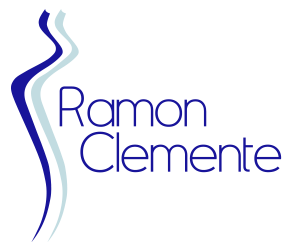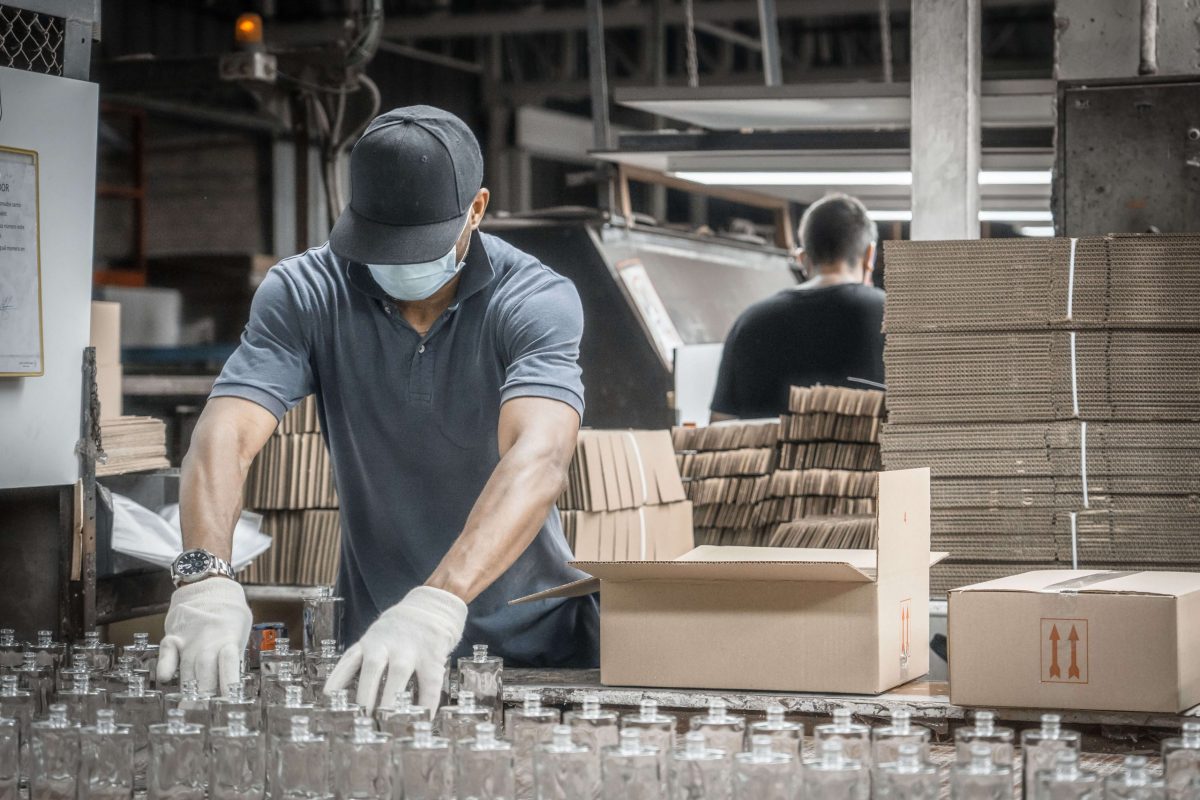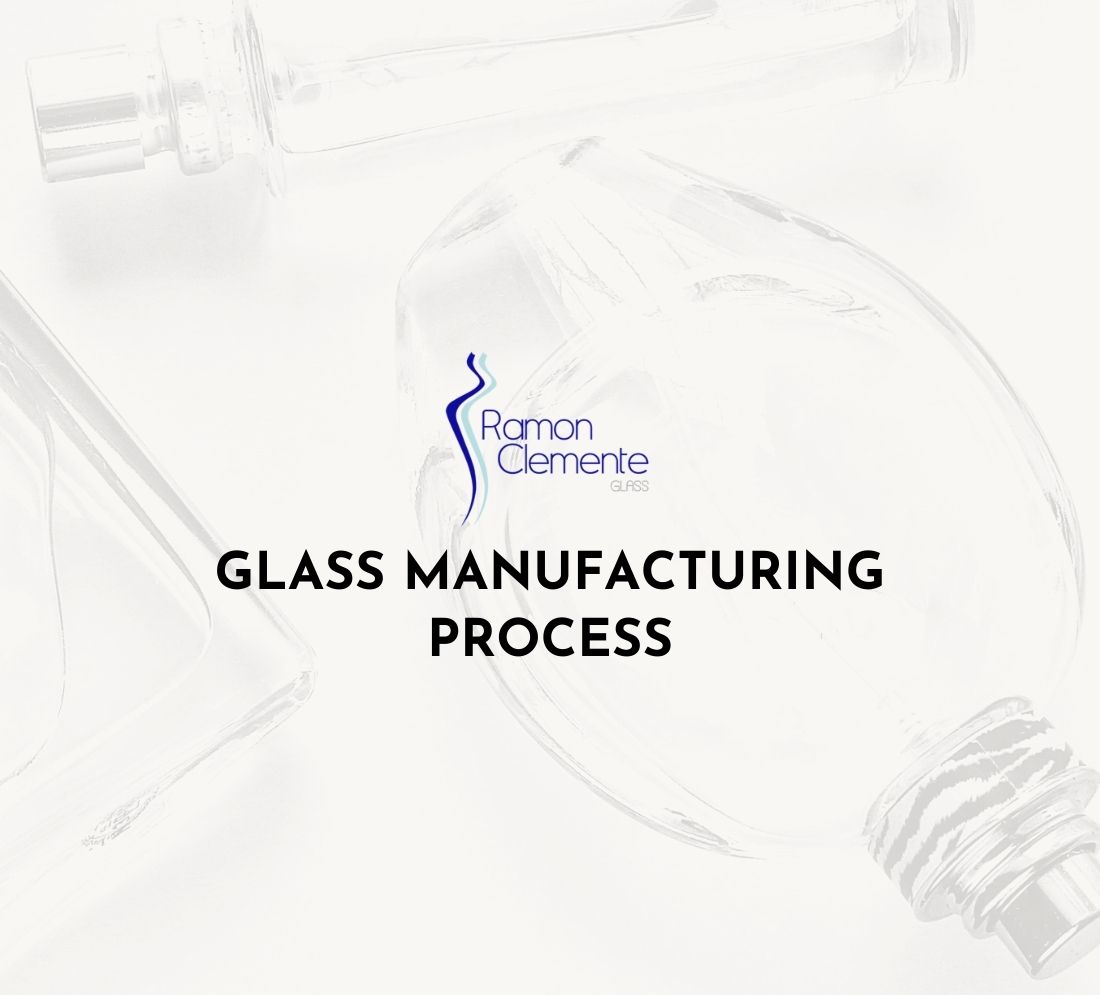
Glass manufacturing process
Ramon Clemente manufactures, paints, and decorates glass containers for the perfumery and cosmetic industries.
We operate in an international environment, collaborating with the best cosmetic and perfumery companies (Pepe Jeans, PUIG, ZARA, MAVIVE, ESPRIT, and Pedro del Hierro, to name a few). Since our inception, our philosophy has been to conquer new markets within the industry and improve the quality of the services and products we offer.
This post explains the process we follow when we receive an order and details the glass manufacturing process.
Customer attraction

At present, Ramon Clemente has 3 locations in Barcelona (El Masnou, La Llagosta and L’Hospitalet) and Sales representatives in many countries: France, Italy, Greece, Germany, Switzerland, Austria, the United Kingdom, and Turkey.
From Barcelona, we produce and decorate over 80 million glass bottles every year for small and large companies in France, Italy, the USA, the United Kingdom, the Netherlands, the United Arab Emirates and Russia).
This commercial activity allows us to cover a more expansive territory and, therefore, to have customers around the globe.
Design stage
At Ramon Clemente, we offer our customers a 360º solution that includes all stages of production, from the manufacture of the containers to the decoration of the glass and the finishes.
The production and sale of glass containers is not a mere sales transaction. It also involves understanding the customer’s idea from the very start. It truly is a comprehensive service that turns ideas and designs into a reality.
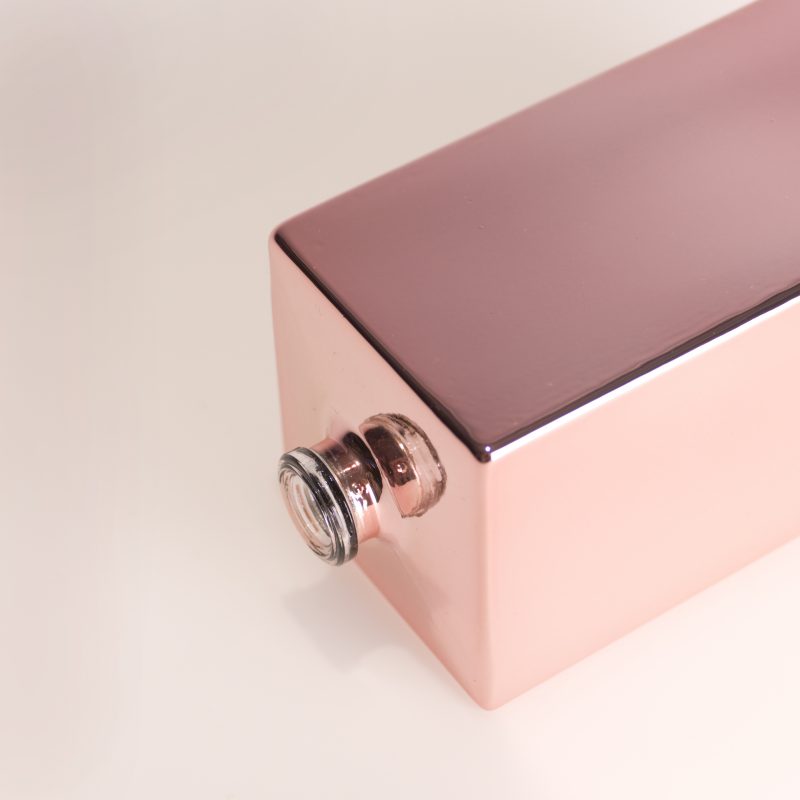
The design stage may entail the modification of a standard model or the creation of a completely customised or exclusive container.
This is why we work hand in hand with the customer in this stage, offering state-of-the-art manufacturing, painting, and decoration techniques.
Ramon Clemente currently has 3 headquarters:
1/ Ramon Clemente – El Masnou: Where glass is manufactured.
2/ Walter Friedrich – La Llagosta: Where glass is painted.
3/ Walter DEC – L’Hospitalet: Where containers are decorated.
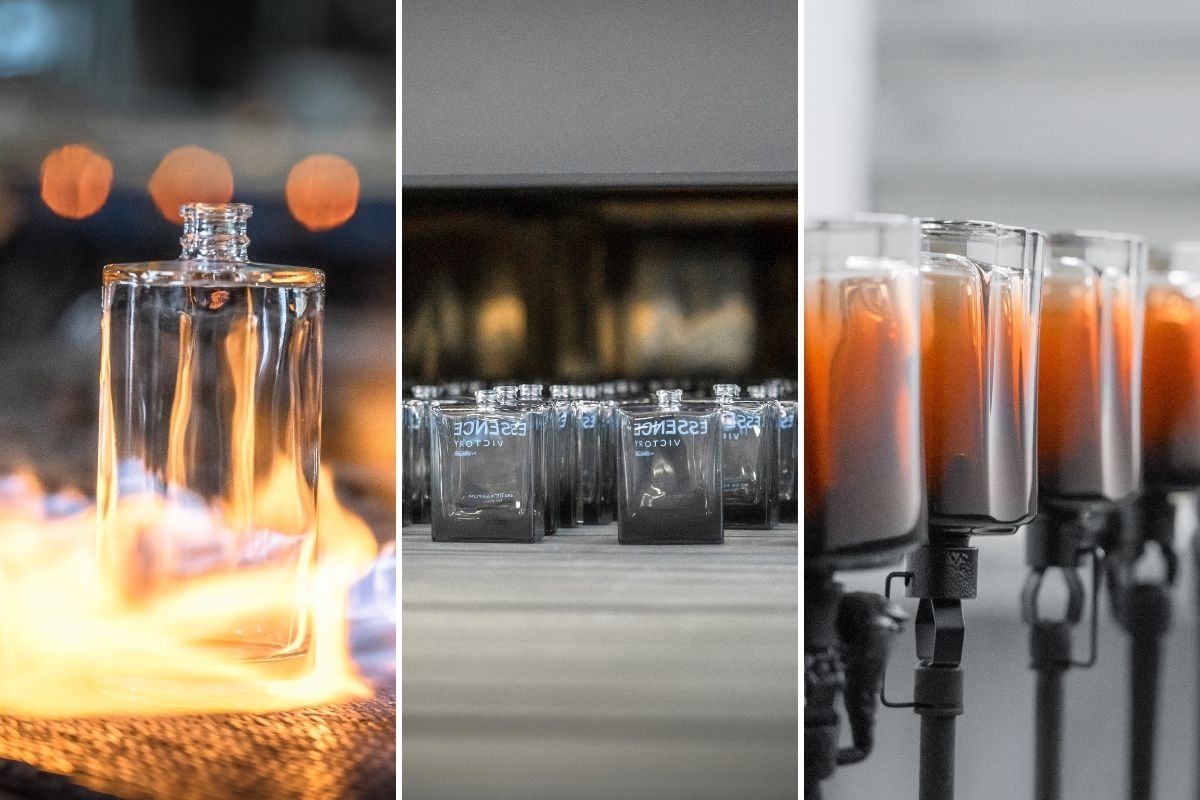
There are countless possibilities. And thanks to our design team, we can provide end customers with a variety of solutions: different shapes, sizes, finishes, screen printing, hot stamping, thermoplastic gold and platinum pastes, and metallic finishes, which give the product a much more exclusive design.
Worth highlighting is the manufacture of standard and exclusive products using post-consumer recycled glass, specially intended for customers with high environmental sensitivity.
We have a professional and agile industrial team that can overcome the greatest of challenges.
Glass is a natural, noble material with character. At Ramon Clemente, we know how to overcome the limits of glass to make the best designs for our customers.
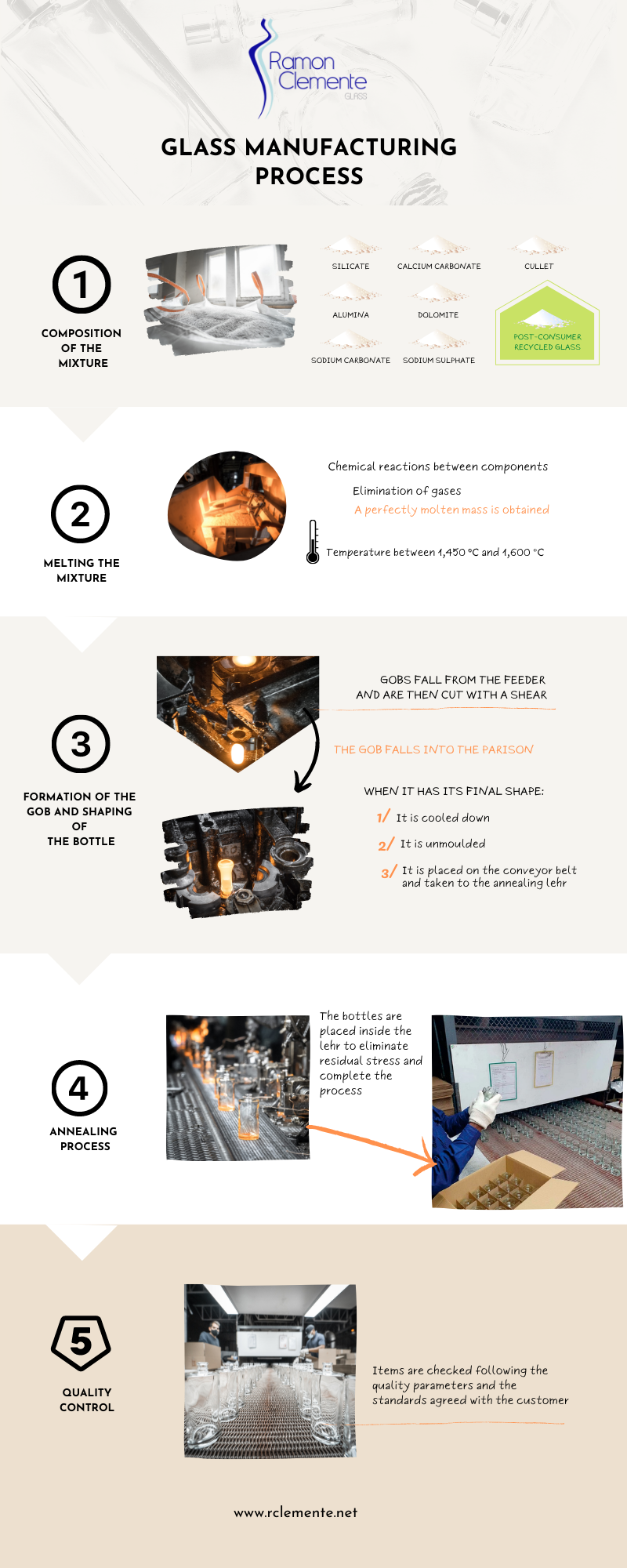
Glass manufacturing process
The company’s glass manufacturing process follows a continuous and linear path. It starts with the loading of the raw materials in the melting furnace. Then, the glass gob is formed, and the bottle is shaped. The final stages are the annealing process and quality control.
Below is a more in-depth description of these stages:
1/ Composition of the mixture
Glass is an amorphous solid obtained by rapidly cooling a molten mass.
It can have a wide range of chemical compositions, although oxide glass is the most popular one. In our case, the one we use is silicate glass, which has silicon oxide as its main vitrifying component. It contains other raw materials such as sodium carbonate, calcium carbonate, sodium sulphate (flux materials), alumina and dolomite (stabilisers), and cullet (recycled glass). This last component is essential because of its contribution to energy savings. By using recycled glass, the melting temperature can be lowered. Also, fewer raw materials are used, and CO2 emissions are reduced (since the extraction and the manufacturing processes require less energy).
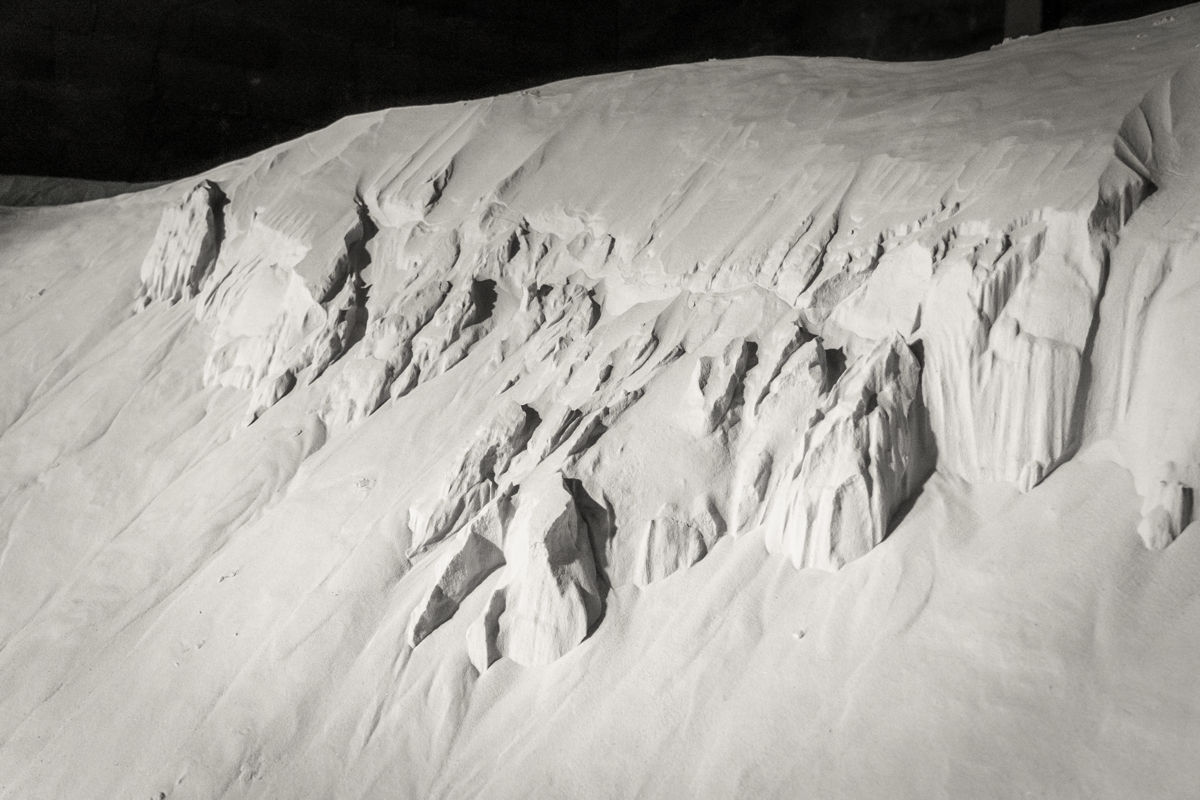
The glass manufacturing process is always the same. However, in this stage we have the chance to use a combination of internal recycled glass together with post-consumer recycled glass (PCR) in different percentages.
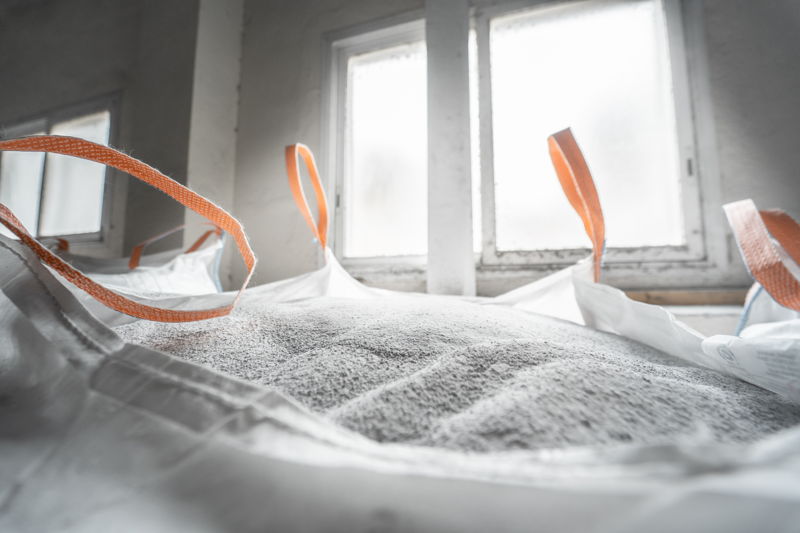
PCR is recycled glass that is retrieved from municipal waste collection services. This means that it has been previously consumed and then separated by colour by specialised companies. This brings major environmental benefits. It reduces the impact on resources, cuts down on energy consumption and emissions, and plays an important role in contributing to the circular economy.
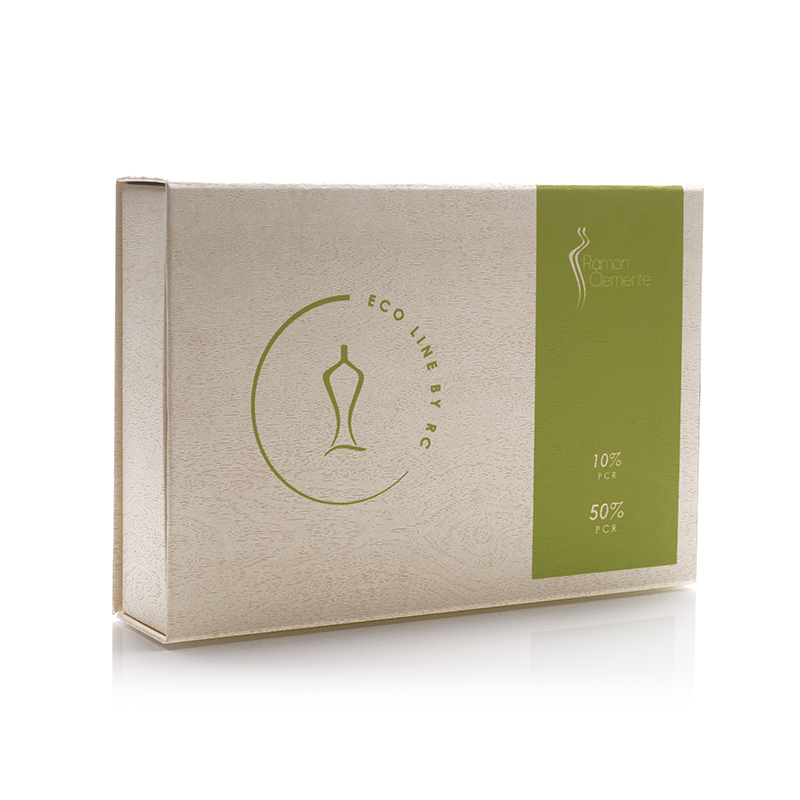
Melting the vitrifiable mixture involves a complex process. Its starts with the chemical reactions between the mixture’s components and continues with the elimination of gases and the homogenisation of the molten mass. Finally, the molten mass is conditioned at a suitable temperature to allow its shaping, depending on the process and the final product.
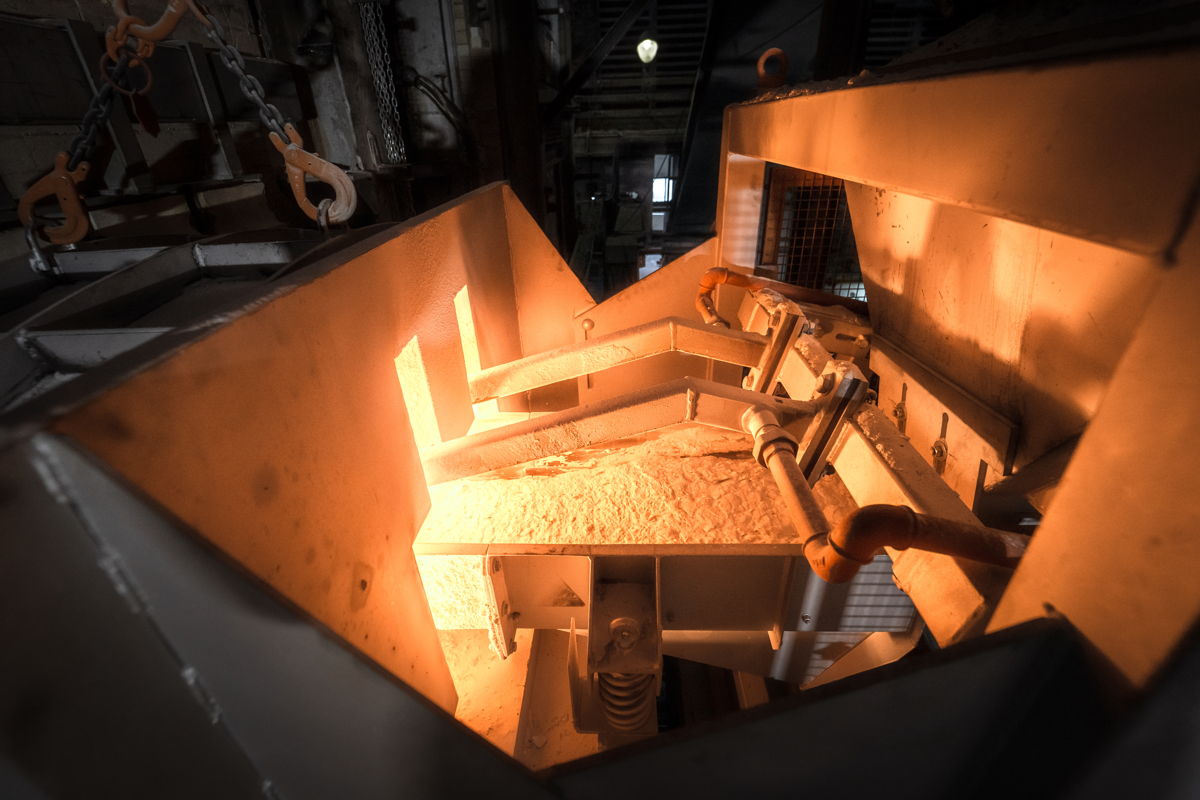
As the temperature rises, other reactions occur; the presence of all the substances lowers the melting point of the silica, and the grains of sand dissolve in the liquid stages. Between 1,450 ºC and 1,600 °C, the mass is perfectly molten and all chemical reactions are complete.
At Ramon Clemente, all our products are manufactured with moulding machines that automatically shape the piece using blowing or pressing techniques.
These machines are intermittently fed glass gobs that fall from the feeder.
As the glass passes through this feeder, it cools down a few tens of degrees in the first section. Then, it continues to advance as it is heated by burners that bring it to a suitable temperature and maintain it in the conditioning section until it is discharged into the machine through the feeder.
The feeder leads to an opening that can be adjusted by fitting rings of different diameters. A refractory tube is placed above this opening. Inside, a plunger, with an alternating movement in the direction of its axis, regulates the speed of the glass gob. The opening is closed by a shear that cuts the glass gobs.
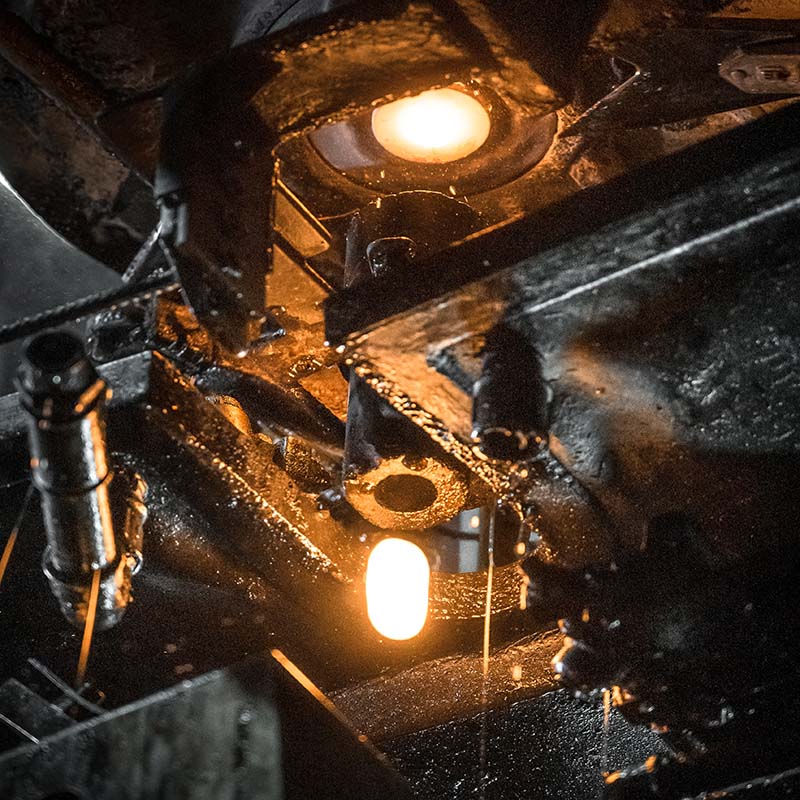
The gobs fall through a channel in motion which, following a specific order, successively conveys them to each of the machine’s sections where the pre‑moulds are located. These, placed in an inverted position, collect the gob. Then, a short burst of air is injected to enable the gob to reach the bottom of the pre-mould. At the same time, a plunger in the lower part forms the mouth of the bottle.
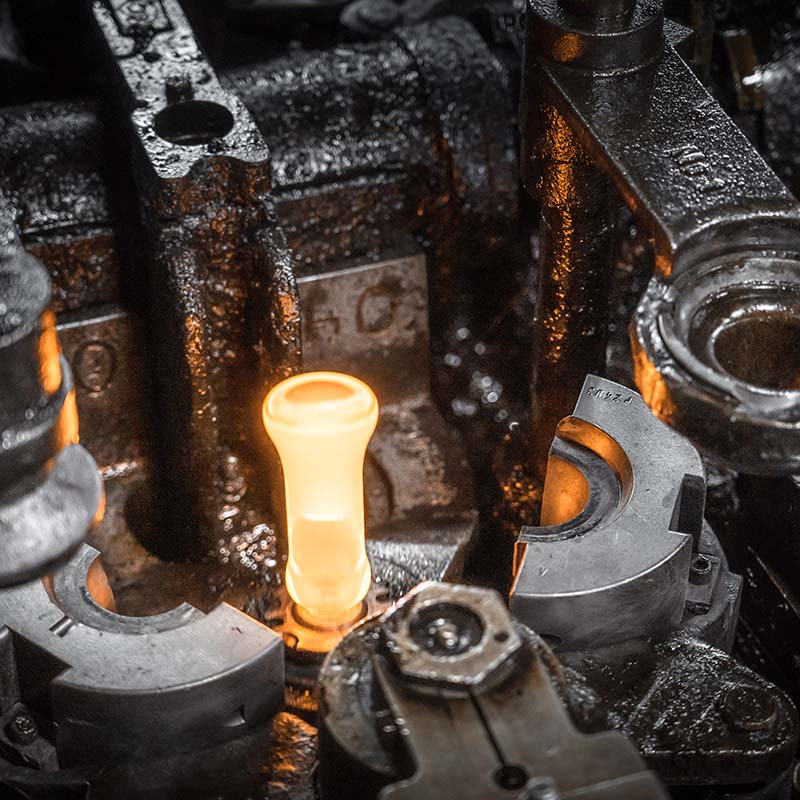
In the next stage, the plunger is removed, and air is injected again through the lower part of the pre-mould to project the glass against its walls and create the parison or preform. A short time after, the pre-mould is opened and a mechanical arm takes the parison by its mouth and transfers it, upside down, to the finishing mould. In this mould, the glass is reheated using its own heat, blown again to give it its final shape and cooled enough to prevent any deformation when it comes out of the mould. Finally, the finished bottle is placed on the conveyor belt that takes it to the annealing lehr.
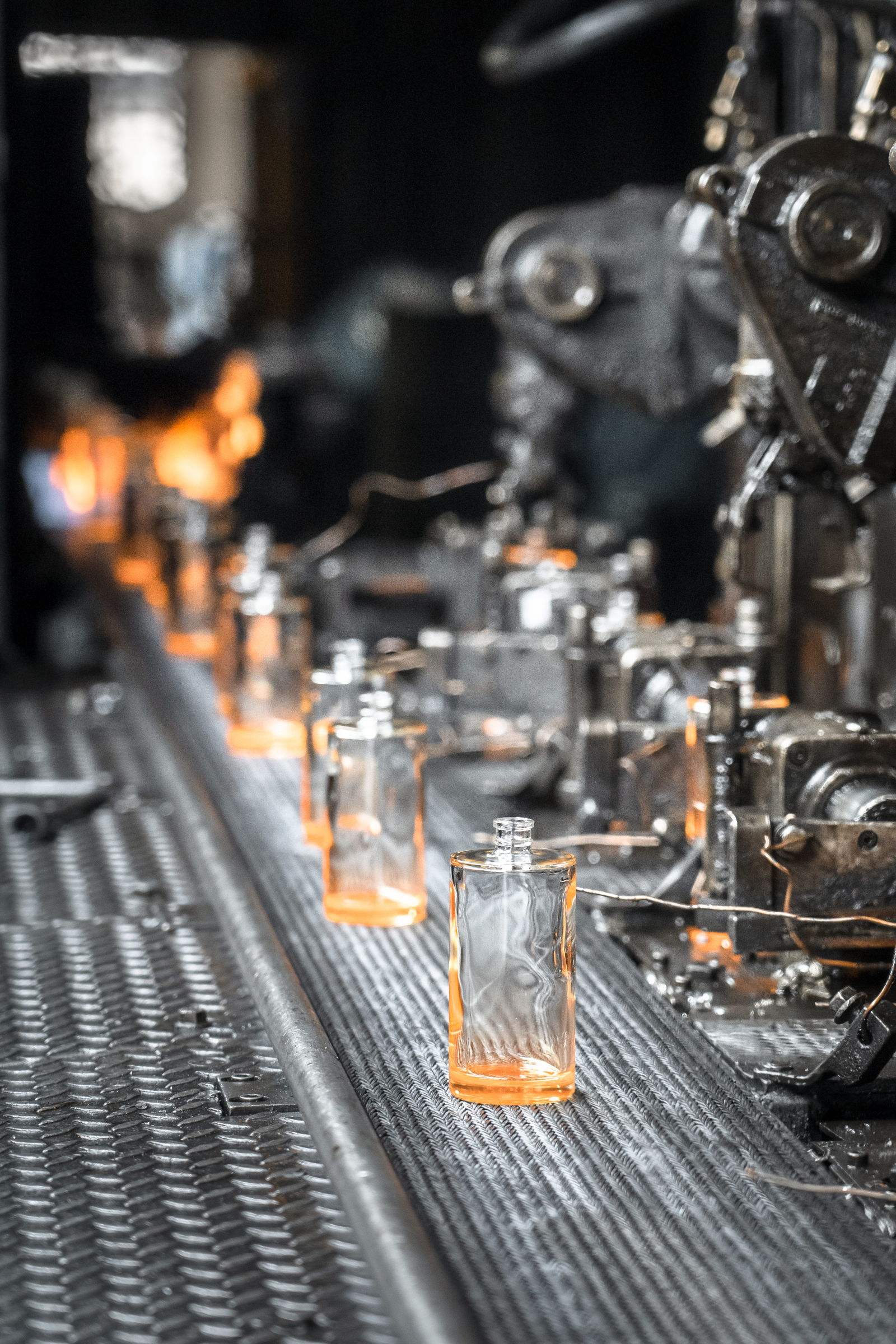
4/ Annealing process
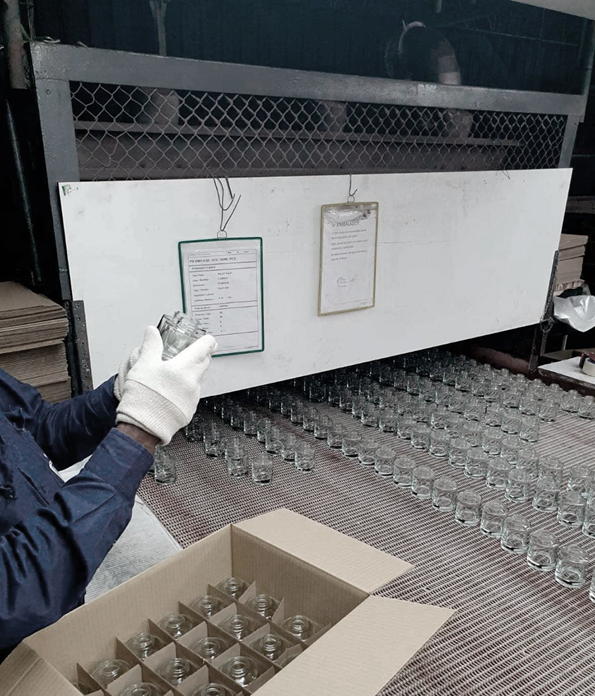
Despite the wide variety of shapes and sizes of the items, the process is similar in all cases. Annealing lehrs of 20 to 25 m in length with gas or electric heating and stainless-steel mesh conveyor belts are used. The process consists of loading the lehr by hand and programming it to the speed of the machine; when the system detects that there is, in fact, the indicated number of bottles, a horizontal pusher automatically inserts them. Achieving a suitable temperature curve inside the lehr is important since the items must be reheated, and the residual stress caused by the different temperature gradients they have experienced must be removed.
5/ Quality Control
Once the bottles come out of the lehr at room temperature, they are checked following the quality parameters and the standards agreed with the customer.
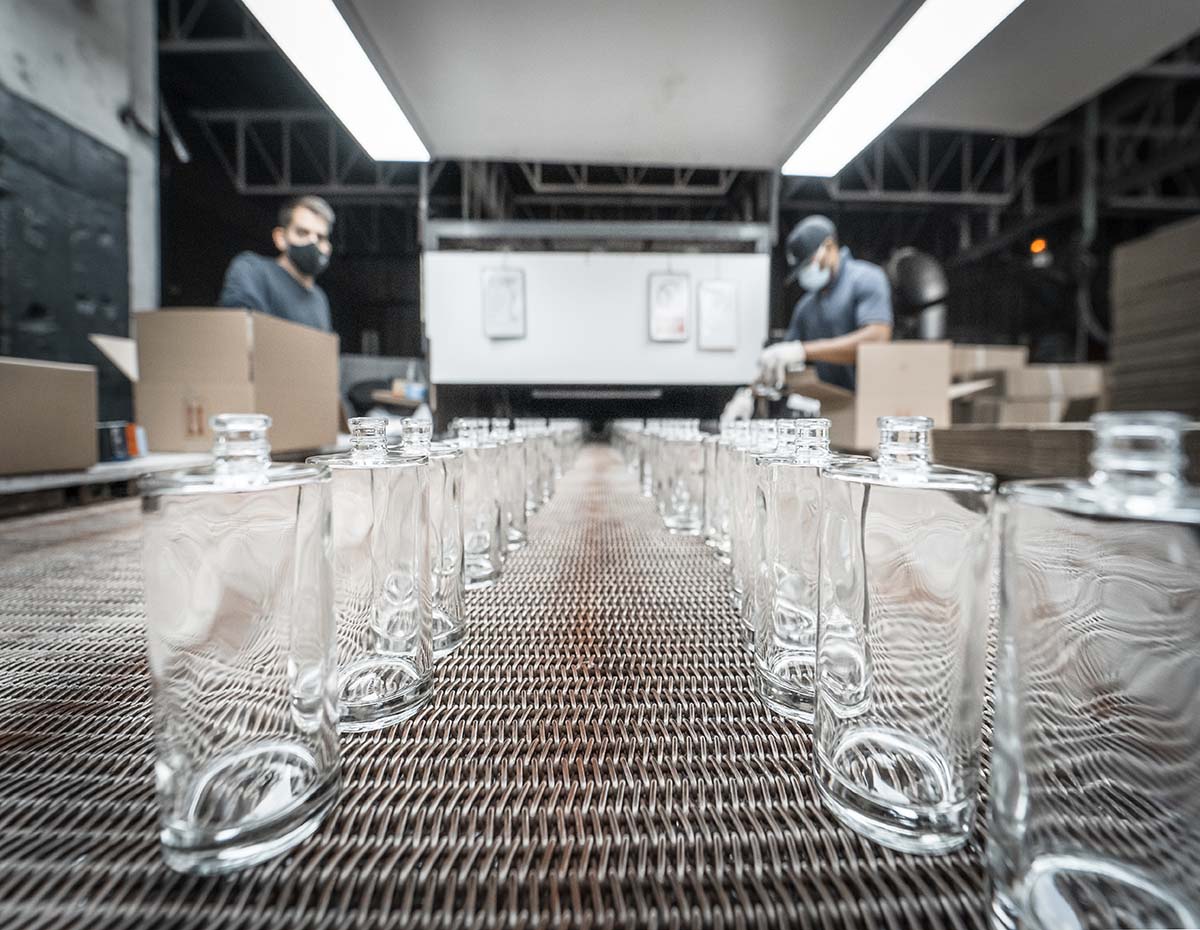
As we have seen throughout this post, the glass manufacturing process requires a highly skilled treatment and the best technology. It is a continuous and linear process with furnaces that are on 24/7.
The flexibility of our production allows us to produce short and very long runs of the most exclusive glass bottles. But above all, we turn the customer’s original idea into a tangible product, in record time and with the desired quality.
All activities carried out at RAMON CLEMENTE intend to provide the highest quality for the product with the sustainable use of resources.
Our company is extremely aware of environmental management. It always identifies and assesses ways to improve in order to protect people, the facilities, and the work environment, thus preventing pollution and minimising any potential consequences.
We develop and apply company-wide good environmental practices with authority. We also hold the Recycled Claim Standard 100, a seal that guarantees (for the appropriate items) that at least 5% of the raw materials used in the production and supply chain are recycled. Therefore, it is a B2B tool that guarantees the quality of the sold products.
If you want us to take on your project, feel free to contact us.
